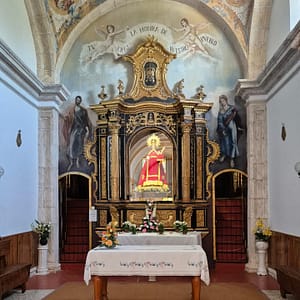I have just come back to Murcia after a few days in Castilla-La Mancha and Madrid. One of the highlights of the trip was a visit to Las Calzadas in Pozoamargo, in the DO Ribera del Júcar.
Daniel Sevilla hosted me, with his girlfriend Raquel and his father José Julián. They showed me around their different vineyards, gave me a tasting of an excellent range of clay jars aged wines and even offered a delicious lunch with lechazo (young lamb), the local manchego cheese and so forth.

Moreover, this was also a trip down memory lane. Some years ago I visited José Miguel Jávega, who is the cousin of Daniel’s father. José Miguel was director of the Casa Gualda cooperative, that I happened to collaborate with at the time. He supported me this time via social media, and suggested that i gave this wine a try. So I did, and we also visited the same chapel as many years ago and saw the same old Roman roads, the Calzadas, that gave the name to this new company.

The wine is made exclusively with pardilla, a local low-yielding grape that has practically disappeared. I was more common in the Pozoamargo area before. Las Calzadas is involved in a recovery process for the variety. The soil is calcareous clay with a layer of rounded pebbles, typical of the banks of the Júcar river.

The grapes were destemmed and there was skin contact for 12 hours. After manual pressing it settled in a jar. The juice fermented in more than 100 years old clay jars, then aged 4 months on lees in the same jars. The wine was bottled without filtering or clarifying.

Tinácula Blanco 2023 (Las Calzadas)
Light golden colour. Deep and complex aroma of yellow apples, white flowers, wax and citrus peel. Unctuous in the mouth, creamy with good acidity and a saline finish.
Price: Medium
Leave a Comment










